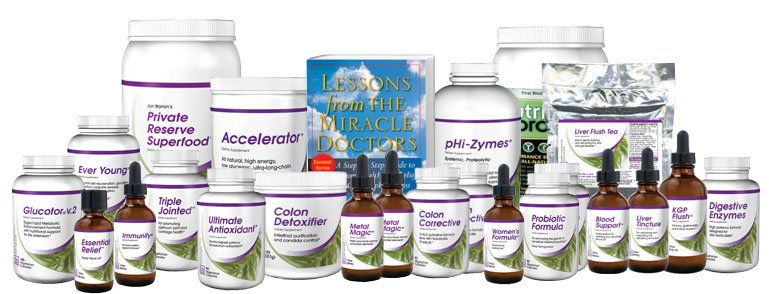There’s some bad news for those hoping that the anti-viral drug Tamiflu will save them should they get sick this winter. It seems that a significant percentage of seasonal flu cases have become Tamiflu-resistant, according to a study completed by the European Centre for Disease Prevention and Control (ECDC). The ECDC tested 148 samples of the most common seasonal flu, Influenza A H1N1, and found that 13 percent of the samples did not respond to the anti-viral agent. These findings raised concerns, since Tamiflu currently is the frontrunner antiviral drug worldwide, and many nations have been stockpiling it in case of a bird-flu pandemic. Tamiflu is not a vaccine and doesn’t prevent the flu, but rather, works to lessen symptoms and to shorten the duration of the illness.
Tamiflu (oseltamivir phosphate) is an antiviral drug marketed by the Swiss pharmaceutical company, Roche. It belongs to a group of drugs called neuraminidase inhibitors. It works by targeting a protein called neuraminidase that exists on the surface of flu virus cells. This protein helps the flu virus break through cell walls so it can move into new cells and replicate itself. Tamiflu inhibits the neuraminidase protein so that the virus cannot penetrate and infect new cells. Eventually, the virus dies. The active ingredient in Tamiflu, oseltamivir, is a one-dimensional, synthesized extract of a substance called shikimic acid, found as part of naturally occurring complexes in plants like Chinese star anise, ginkgo, spruce, pine and fir trees. Isolating it allows for higher concentrations and makes it patentable — but it also removes it from the presence of other bioactives that would be found in its natural environment. As we will see in a bit, this matters.
In response to the ECDC findings, the UN-based World Health Organization (WHO) launched its own investigation of Tamiflu’s effectiveness, contacting health authorities in nations around the globe to track risk. It seems that resistance varies remarkably according to where in the world the flu samples come from. In Canada, authorities report that about 10 percent of flu samples have become resistant to Tamiflu, in Japan only three-percent show resistance, and in the United States, resistance currently runs at about seven percent. But in Norway, an overwhelming 75 percent of the flu samples were Tamiflu-resistant. The researchers found these results confounding, since the “accepted theory” is that resistance develops when a drug is over-prescribed, and physicians in Norway rarely dispense Tamiflu.
So why are Norwegian viruses so recalcitrant? I hate to say, “I told you so,” but from my perspective, increasing resistance to Tamiflu is as predictable as rush-hour traffic in Los Angeles. I discussed the limitations of antivirals and antibiotics in my 12/5/05 newsletter (appropriately titled, Why Antibiotics and Antivirals Fail), in which I explained that pharmaceuticals are doomed to ultimately stop working since they have only a one-dimensional approach to wiping out pathogens. Remember, viruses and bacteria are very simple structures that can mutate easily. Antiobiotics and antivirals work by attacking a single structure in the pathogen, leaving the rest of the pathogen intact. This process selectively breeds super strains of a given bug, since only those bugs with a natural resistance to the drug survive — thus ultimately rendering the drug useless.
For instance, Penicillin destroys bacteria by clinging to and then penetrating their cellular walls. Those few bacteria with naturally thick walls survive and reproduce — mutating to develop even thicker, Penicillin-resistant walls; and when the mutation succeeds, the drug-resistant bacteria multiply. The most disturbing fact is that bacteria can swap genes with other types of bacteria (a process known as “reassortment“), meaning that drug-resistant strains of bacteria that cause a disease such as strep throat can then pass the drug-resistant genes on to bacteria that cause different diseases entirely. And viruses experience reassortment in exactly the same way — thus facilitating the transfer of resistance from one type of virus to another.
Because viruses have an even more primitive composition than bacteria–consisting of one type of biochemical (a nucleic acid, such as DNA or RNA) wrapped in another (protein)–they mutate extremely easily and quickly and can develop drug-resistant strains in just weeks or months. And so, it’s no surprise that in Norway, Tamiflu-resistant flu strains have proliferated so rapidly. There’s nothing particularly special about Norway; it just happens to be where the inevitable happened first.
What does this mean for you–other than that you should postpone that trip to Oslo until after flu season? It means that you should rely on natural antipathogens for help, as they do a much better job of fighting viruses than pharmaceuticals do. Naturally occurring organic compounds have a complex chemical composition, unlike one-dimensional pharmaceuticals that target a single weakness in a pathogen, which provides an easy bypass for mutation. Because of their complex structure, natural agents can attack pathogens on multiple fronts at once. For instance, garlic, a natural antiviral, has 100 biologically active compounds that can pair up in thousands and thousands of different combinations, which by their very complexity provide an impenetrable barrier to the genetic mutation of simple organisms.
Garlic is just one of a group of natural pathogenic agents highly effective against viruses and bacterial infections. Other effective viral agents include:
- Onion
- Olive-leaf extract
- Oil of wild mountain oregano
- Habanero
- Horseradish
- Liquid ionic zinc
- Grapefruit seed extract
- Apple cider vinegar
- Black elderberry
Each of these compounds, on its own, works well to combat pathogens, and when used in combination, they can create a solid defense against disease. The bottom line is that drug-resistance to pharmaceutical drugs can, and does, develop easily; pathogens cannot possibly develop resistance to the billions of combinations that the thousands of biologically active compounds in natural antivirals can produce when used in combination. So if you want to have something on hand to help you out just in case you do get a seasonal virus, don’t pin your hopes on Tamiflu. Rather, keep a stash of a high-quality, natural, antipathogenic compounds in the cupboard.
:hc












This is more a question than a comment: Would taking Super Oreganol interfere with Tamiflu if one took them both in the same 24hrs? My husband has the flu; our doctor prescribed Tamiflu for him (2 per day, morning and night) and for me prophylactically: 1 per day, which I take in the morning. I was taking Super Oreganol (oil of oregano) 2X daily, but stopped, fearing it would stop the Tamiflu’s action. Now I’m running a 99.2 fever at 10AM, w/slight nasal congestion and small amount of throat involvement, like hoarseness. I want to go back on the Super Oreganol. Can I do this w/o a problem, esp if I take it at lunch and supper, away from the time I take Tamiflu? I solicit your opinion, and I will not hold you responsible for any bad effects I bring on myself due to your or anyone else’s non-medical (whether or not you are an M.D.) opinion. Thanks!
There is unlikely to be a conflict. More likely that it would complement it. Tamiflu itself is a plant extract from the Chinese star anise — albeit a synthesized one dimensional extract. In a sense, it could be added to the list of antivirals listed above in the blog.
I haven’t had a flu shot in 5 years. I found ocillococcinumto prevent the flu. and for colds, i take ziczm swabs. because it works.
for my immune system, beta 1/3 1/6 glucan
salba, acia.
My duaghter(14) and I (48) did not get the flu shot this year. My daughter was very confident that it was not necessary as it only covers a few of the viruses that are out there in the world of germs today. What do you recommend for us to have on hand to confidently make it through these winter months healthy? Thanks! Jan
Jan:
Jan:
I’m not sure what you’re asking. The blog entry above itself provides explicit information on how to deal with viruses, as do several of the links in the blog. But if you’re looking for specific information on how to deal with the flu, try http://www.jonbarron.org/strong-immunity-program/10-25-2004.php.
I am familiar with homeopathy and do some homeopathic dilutions/potentiations and would like to know if your antibiotic/antiviral products elicit their effects by direct contact with the bactiria/virus or is it the energy of the substance that kills the organism?
If it is the energy that is effective, could your Barron Effect Tinctures be used to make homeopathics
Gerald:
The Barron Effect is specifically designed to extract more bio-actives from herbs during the tincture making process — and to extract the oil soluble bio-chemicals in addition to the usual water and alcohol soluble bio-chemicals. It would not be applicable to the making of homeopathics, which is not an extraction process but an energy transfer process. On the other hand, bio-energization (aka scalar enhancement), would likely enhance the efficacy of homeopathic formulas.
A friend of mine told me about your website.
I am so grateful for that. I have used various supplements including multivitamins etc. and nothing seems to help. I have developed vitilago (white patches on my skin). Can you recomend something from your products that could help to bring the colour back? Thanking you ahead
Lenka
What about colloidal silver?
It kills most bacteria, fungi and viruses by suffocating them.
I have been making my own for over 30 years to combat colds and flu.
It’s well documented as being able to kill over 650 different strains. Most bacteria, fungi and viruses are 1 celled living organisms and colloidal silver cuts off their oxygen supply making it impossible for the cells to survive. They also cannot adapt to colloidal silver. I believe it may be our last line of defense.
emile beaulieu re: colloidal silver. What you are making is large particle silver- NOT COLLOIDAL SILVER! In MODERATION this is ok. But the amounts needed for chronic / deadly illness could not be safely consumed without risk of gray skin- true colloidal silver will not do this even at extreme doses, & you can’t manufacture it at home-meso or wellness are good & available, it can be a miracle used correctly we at woodstateas .com have used it with great success. So check trusted web resources & do your own research & see.
Hi I got a very resistant flu clear last november and i have had it in a chronic form for 7 months now, no fever or aches, but remaining fatigue and weakness and mucous in sinus and ears,, would the viragone still be useful now to get rid of it or does it mean my immune system is shot? {I do not have HIV}
My Question is to Emile Beaulieu. I would like to have your recipe for Colloidal Silver. I use to get it from my naturepathic doctor, he was going to teach me how to make it but I never seem to have the time. He has since passed away. I have taken it for years too.
My question is for Jon Barron, What do you think of colloidal silver consumption? I dont want to be gray or blue. I was thinking you mentioned it in your book, but cant remember. I am having sinus issues, as well, dont know if they are bacterial or fungal, or both. I have been rinsing with a neti pot and the neil salt packets twice daily. My sinus still draw and pull, like theres something wrong and I get so much pressure, that I cant drive for the headaches and carsickness. Help , what do you think?
Scalar Energy,
Scalar Energy,
Hi Jon, was watching a video of you on Scalar energy benefits, could you direct me as to where I may purchase these products, i dont seem to be able to find them ..
Thanks in advance. /Ted
Here is more information
Here is more information about scalar energy that may be helpful: https://jonbarron.org/article/energy-life